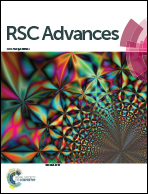Inhibitive action and adsorption behavior of cefotaxime drug at copper/hydrochloric acid interface: electrochemical, surface and quantum chemical studies
Abstract
The inhibitive action and adsorption behavior of cefotaxime drug on corrosion of copper in 0.1 mol L−1 HCl solutions was discussed using potentiodynamic polarization, electrochemical impedance spectroscopy (EIS), electrochemical frequency modulation (EFM), scanning electron microscopy (SEM) and energy dispersive X-ray (EDX) techniques. The results obtained from different electrochemical measurements revealed that the cefotaxime drug is a good inhibitor efficient in the studied concentration range. Polarization curves suggested that the inhibitor is a mixed-type inhibitor. EIS spectra showed that the addition of inhibitor increases the charge-transfer resistance of the corrosion process, and hence the inhibition performance improved. Results obtained from EFM method are shown to be in agreement with potentiodynamic and EIS measurements. The adsorption behavior of inhibitor on copper surface followed Langmuir adsorption isotherm. SEM and EDX examination of the copper surface revealed that cefotaxime drug prevented copper from corrosion by adsorption on its surface to form a protective film. Quantum chemical calculations were employed using DFT method to determine the possible active centers responsible for the adsorption of cefotaxime drug on the copper surface.


 Please wait while we load your content...
Please wait while we load your content...